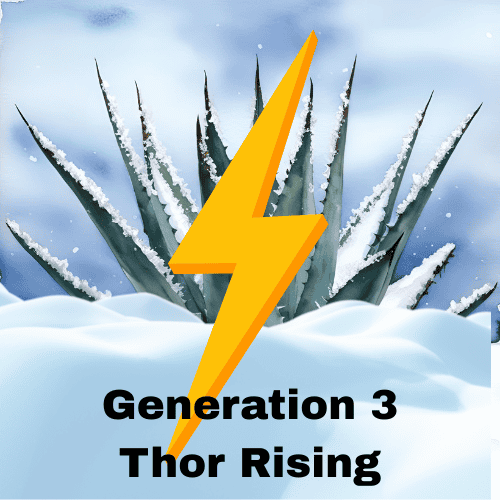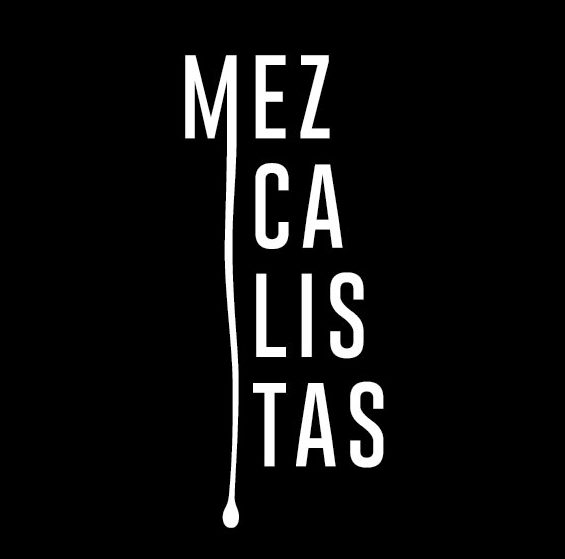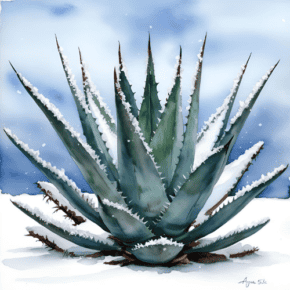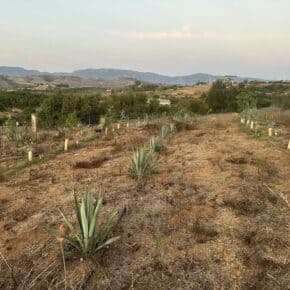In one of the stranger stories regarding global climate change and rapidly melting snowfields in Greenland, scientists recently discovered a field of fossilized agaves.
The discovery was made last year and has been kept under wraps while it was confirmed through genetic testing and carbon dating. Malik Johansen, a geobiologist at Ilisimatusafik, or the University of Greenland in Nuuk, said at first his team believed they had stumbled upon a prehistoric, subtropical jungle that had been revealed by the ice fields that are rapidly melting due to climate change.
“It was absolutely stunning to hike over the ridge and see these strange, jagged limbs dotting the landscape. They almost looked like teeth and at first we thought they might have been some sort of prehistoric reptile or dinosaur, which of course would be an amazing discovery,” said Johansen. “This would have changed everything we knew about how far north dinosaurs actually lived.”
As the team of scientists moved closer to the exposed limbs, they realized they were actually some sort of fossilized plant. Johansen further explained, “We had no idea what we were actually looking at so we carefully dug around the limbs.” Once exposed they realized just how giant the fossils were extending almost six meters (20 feet across) and about eight meters (26 feet) high.
Ane Ericksson, professor emeritus of geology from the University of Copenhagen, who was also with the group, recalled that they all stood stunned, realizing that what they were looking at resembled agave. “The only reason we knew what we were looking at was because Malik had just returned from vacation in Mexico and had gone to a mezcal tasting where they showed images of agaves. While the discovery of dinosaurs would have been incredibly cool, a field of what looked to be perfectly preserved agave from the Cretaceous Era was a discovery that would truly put Greenland on the map.”
The group took some samples and returned to their lab where they were able to confirm that it was indeed agave they had found and that it was at least 68 million years old. Once Johansen received the confirmations, he called UNAM biologist Alberto Garcia Marmorata, one of the leading experts in the genetic study of agave and shared the news. When reached for comment, Marmorata said he was still astounded by the discovery and that “this will change everything we know about the origins of agave. This is a complete new species of agave that does not share any genetic markers with species we have here in Mexico.”
As word of the discovery began spreading, the Danish government moved quickly to secure the site and to try and put a lid on the information spreading outside of academic channels. Said Paninnguaq Egerde, Minister of Interior in Greenland, “Global climate change is destroying so many delicate ecosystems around the world. When people look at Greenland, all they see is snow and rock and the possibilities of oil and minerals underneath. What increasing temperatures, and the melting of the ice and snow are revealing is that there is a whole world underneath us that can teach us so much more about life on this planet and surviving disruptions to climate.”
Johansen agreed. “While I love mezcal and would love nothing more to believe that agave began here, what this discovery is telling us is that one day, certainly long after we and our children and our children’s children are dead, it is possible that Greenland could in fact be “green” and an agricultural powerhouse when it comes to feeding the world.”
In late September of 2024, the government of Greenland suffered a major security breach as hackers were able to break into the mainframe computer network system. In addition to getting access to all records of Greenlanders, including property ownership, they were also able to download all internal government communications regarding mineral deposits and the newly discovered fossilized agave field. Some information about the agave find was posted on Reddit by a user named “iced agave.” Research around the fossilized agave revealed a series of veins of what appears to be crystalized sap inside the “piña” and that diffusor technology may be able to extract the material. Interestingly, two days later in a now deleted post on X, Elon Musk shared the below picture with the words, Generation 3, Thor rises.

Also compounding speculation around the breach, in mid-October a company called Mined Agave began buying property across Greenland. Nothing further is known about this company at this time.
We will keep you posted on this developing story.













Leave a Comment